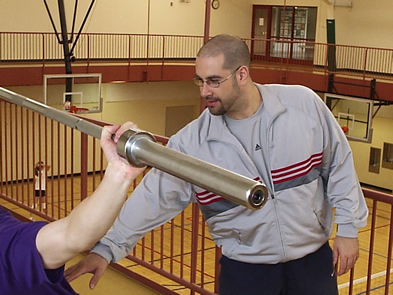How To Co-Exist With High School Athlete Programs
By Wil Fleming
Some of my fondest memories of training came when I was in high school training with my Olympic Weightlifting club 3 nights per week. We had a great time and became better athletes in the process. To me it was a lot like AR before there was an AR. I loved going because I knew that what I was doing was aiding what was expected of me as a high school football player and track athlete.
My coaches supported me and would often come by just to watch training. My high school coaches knew that I was not participating in a competing program but rather one that was only aiding in my development. My high school coaches knew that I was working with experts in the field of strength and conditioning.
As a high school athlete I never felt pressure to choose 1 or the other. This allowed me to enjoy the experience fully and fully commit to getting better when I don’t suggest that we all run weightlifting clubs, but I do think that there are some valuable lessons from that experience to apply to your coaching. It is important to coexist with the high school programs already in place instead of trying to take their place.
Here are my top 4 ways to successfully coexist with programs for a high school athlete already in place.
- Find out what the high school is doing. My weightlifting club would ask coaches at high schools about the current focus in training. At AR Bloomington, I like to find out what the coaches’ focus is at the time and try to augment their results. Being redundant in training is the last thing you want to do, athletes will not want to attend an AR session where they are planning on doing a heavy quad dominant exercise when they did back squats at school the same morning.
- Offer to assist the coach. Assisting the coach is one of the easiest ways to coexist successfully with a high school program. Inviting the coach to watch your sessions is an easy way to show that you have an open door and are not competing for their athletes time, but instead just aiding in their development.
- Don’t Pressure the athletes. Although we remember our high school days fondly and the carefree attitude that was associated with that time, athletes today feel pressure from every direction. Not even mentioning the season during which nearly every hour after school is accounted for on everyday, athletes are expected to attend workouts year round for their sport, expected to participate in club or travel team practices and games. Giving the impression that a high school athlete should only be a part of your program is a quick way to lose athletes from your business.
- Become an expert and then some. Coaches often feel like they must be a jack of all trades, they have to develop their schedule of competitions, they have to handle the gate receipts, they organize fundraising, they have to plan the x’s and o’s and then plan their strength and conditioning program. So why would they send their athletes to train with another jack of all trades?
Despite evidence that year round participation in a sport is a poor route to choose for athletes looking to improve, trying to force this message on your athletes only adds to the pressure that athletes are feeling.
Most importantly is point number 4 below:
Instead find something to be the “go to” expert in your community. Speed and agility, recovery and regeneration, and Olympic lifting are great places to start.
No matter your current level of knowledge, keep improving. My area of expertise is the Olympic lifts and many high school coaches have sought out my help in this area, but I am not satisfied with my current knowledge and have read nearly a dozen books or manuals this year on the subject to keep improving and further separate myself as the go to expert in my community. By improving these skills your business will always be the place to send athletes looking to improve in that area.
The excellence of your training program cannot be experienced without the approval of high school coaches in your area.
Working to gain their trust and acceptance is worth it to get the opportunity to impact more new High School Athlete everyday.


